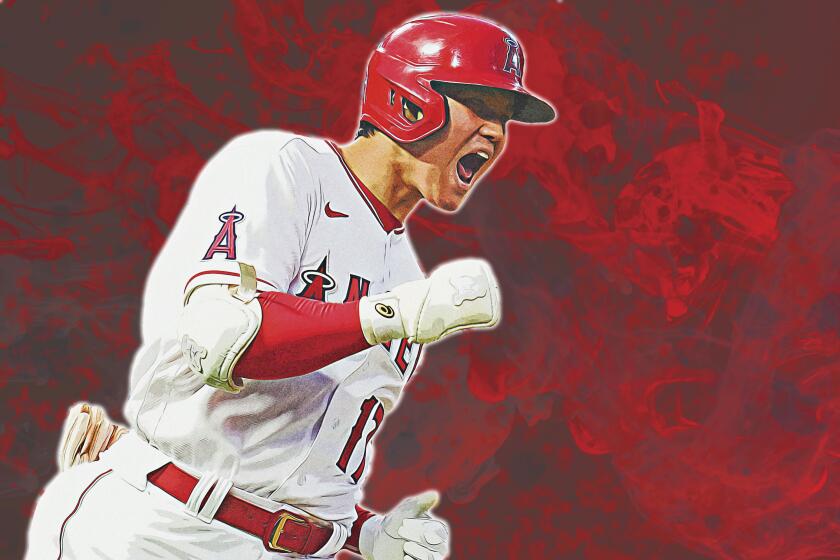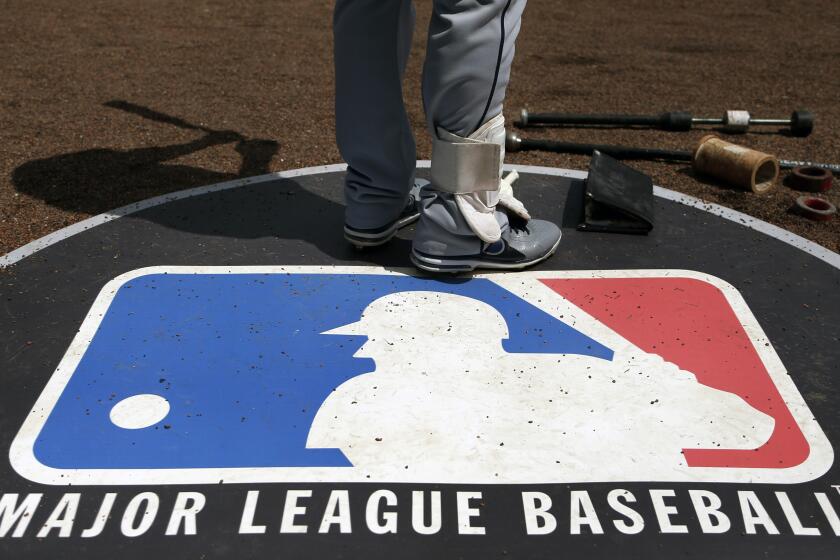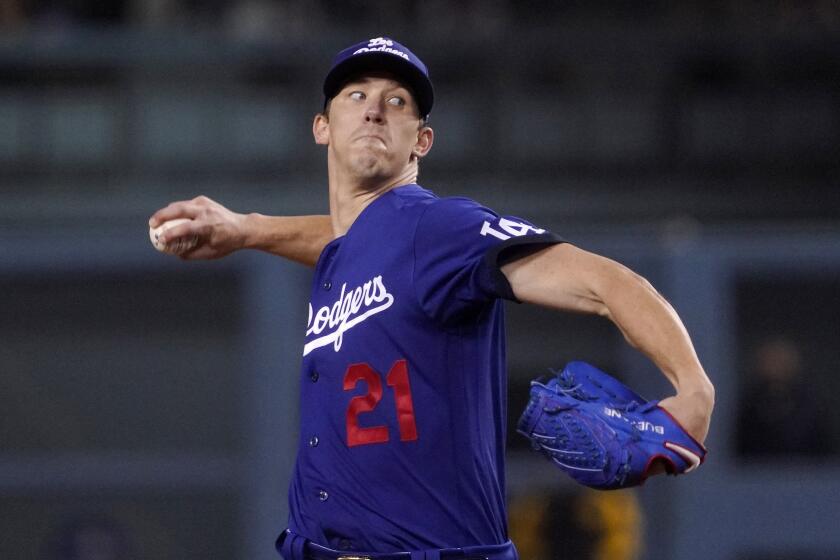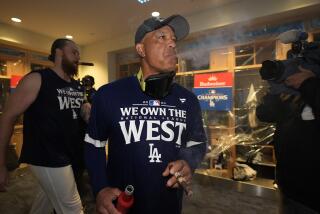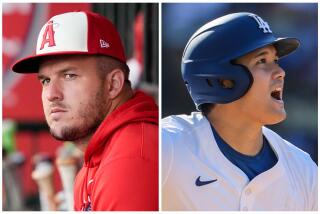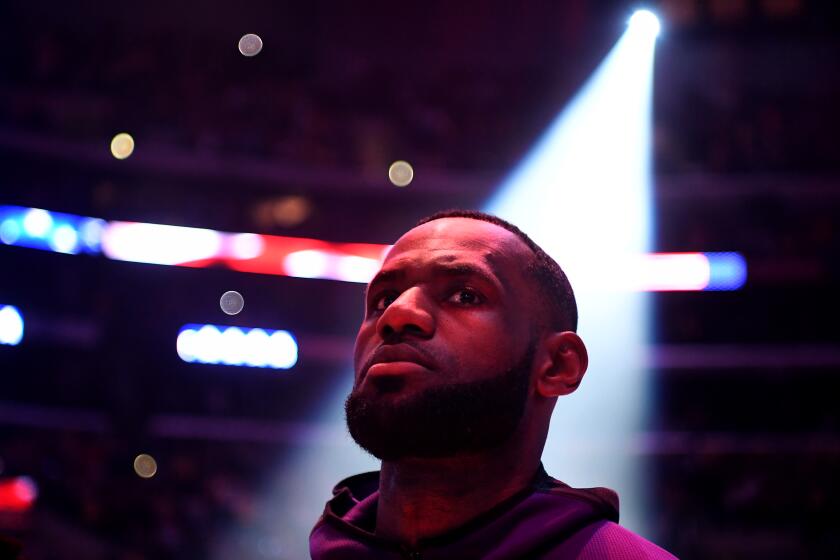Is this the end of the National League as we know it?
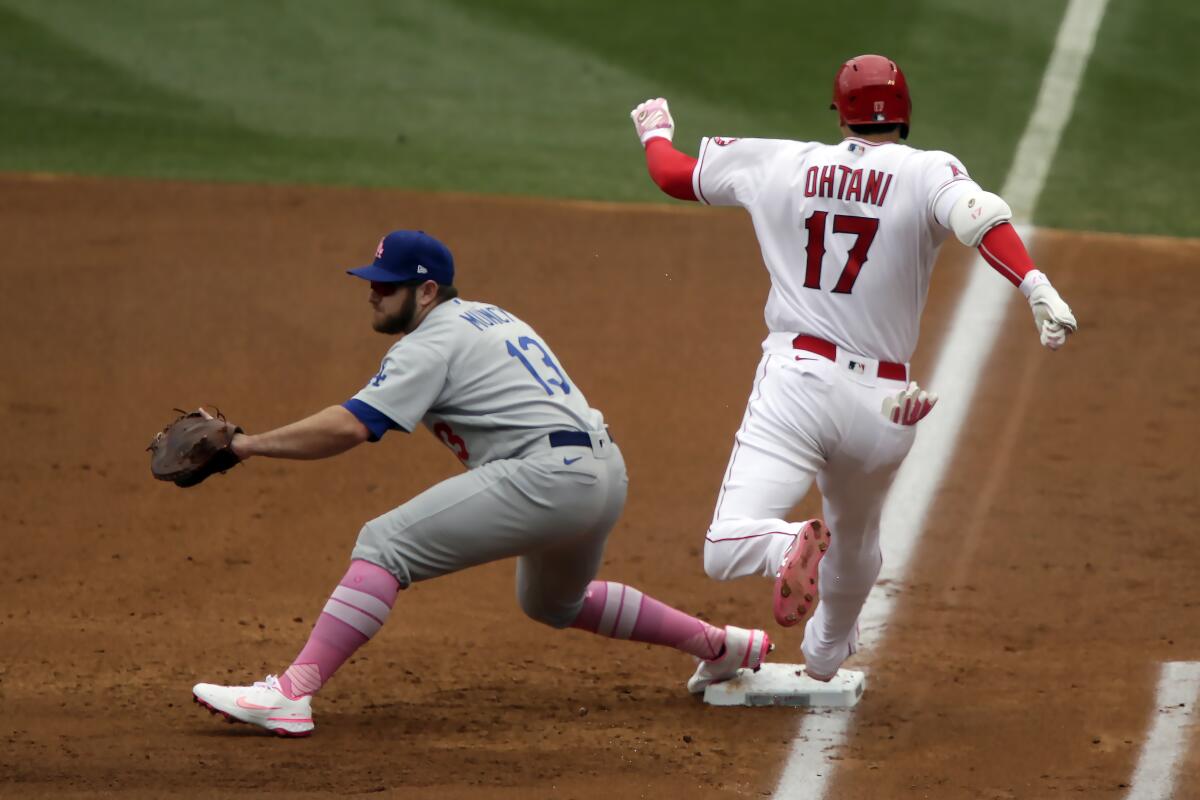
- Share via
Joe Maddon selected an adjective usually applied to a gallon of milk. Then again, for all the romance that surrounds the sport, baseball is a consumer product too.
“Once you eradicate National League rules, then everything becomes homogenized,” the Angels manager said.
With the adoption of the designated hitter in both leagues this year, and with the expansion of interleague play next year, Major League Baseball is giving their consumers what the league believes they want.
The National League dates to 1876, the oldest surviving professional sports league in the world, according to MLB historian John Thorn. The American League dates to 1901.
Shohei Ohtani and many in the Angels organization believe the two-way sensation can improve on his historic 2021 season.
The time could soon come to retire the leagues. They have outlived their usefulness.
For almost a century, the two leagues had a distinguished and at times bitter rivalry. Never did an NL team play an AL team, aside from the World Series.
Each league president determined his own discipline. Each president’s autograph was stamped upon the baseballs used in his league. The umpires in each league wore different equipment.
For generations, fans and players anxiously awaited the All-Star game, the result of which would be trumpeted as the determination of the superior league. Stars played all nine innings, for the glory of their league.
That’s all gone now. Interleague play turns 25 years old this season.
Bud Selig, the commissioner who shepherded interleague play onto the schedule, said he had heard the concept proposed as early as 1948 and pushed for its adoption as an owner in 1973. The AL owners supported the idea then, he said, but the NL owners killed it.
The Dodgers and Angels never have met in the World Series. Does that mean they should never meet at all?
“The Brewers and the Twins have established a really good rivalry,” Selig said. “Why wouldn’t you take advantage of it?”
Next year, it gets better. Every team will play every other team in the majors, every year, home or away.
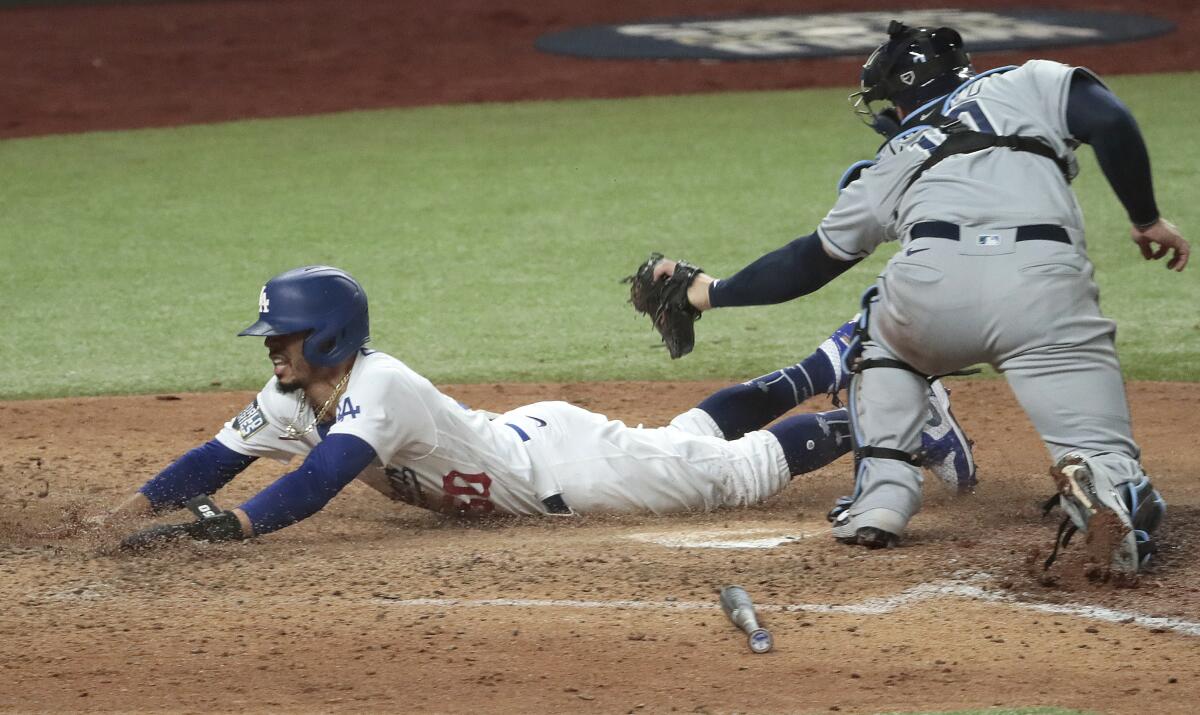
If you live in Denver, you get to see Mike Trout and Shohei Ohtani every other year. If you live in Kansas City, you get to see Mookie Betts and Fernando Tatis Jr. every other year.
From a marketing standpoint, this is a no-brainer. If you are an NBA fan in Toronto, you can see LeBron James every year. Under the current interleague schedule, if you are an MLB fan in Toronto, you might see Freddie Freeman once every six years.
“The adoption of the universal DH unlocked moving to this model,” said Chris Marinak, MLB chief operations and strategy officer.
If the NL had not adopted the DH, MLB would not have more than doubled the number of interleague games, from 20 to 46. The AL teams built around a DH would have faced too great a competitive disadvantage, by playing 14% of their schedule in NL ballparks, where the DH would not have been used.
So, starting next year: The Dodgers will play the Angels four times, twice in Los Angeles and twice in Anaheim. They will play every other AL team three times, either at Dodger Stadium or on the road.
They will play every NL team outside the NL West six times, with one series at Dodger Stadium and the other series on the road. And, like the rest of the NL West, they will play every team in their division 14 times, instead of 19.
“All I heard was I don’t have to watch the Diamondbacks 19 times,” tweeted Kevin Acee, who covers the San Diego Padres for the San Diego Union-Tribune.
Ha, and hallelujah. And better still: The balanced schedule means that a team like the Padres would not risk losing a wild-card spot to the Philadelphia Phillies by one game because the NL West had drawn the powerhouse AL East in interleague play in any given season, while the NL East had drawn the perennially rebuilding AL Central.
This is an improvement, to be sure. But, if the priority is to give the fans what they want, why should the Dodgers play the Angels fewer times than they play the Washington Nationals?
The Lakers do not play the Clippers fewer times than they play the Washington Wizards.
The solution is geographical realignment, a concept Selig said MLB owners considered three decades ago. If the adoption of the DH unlocked the balanced schedule, the elimination of the NL and AL would unlock geographical realignment.
“You need the leagues for structure,” Selig told me. “You need the leagues for the World Series. You need them for certain things, but not with the same need you once had.”
What MLB needs first — as Selig and his successor, Rob Manfred, have said over the past decade — is for the Oakland Athletics and Tampa Bay Rays to end their searches for a new ballpark. Stay or go, but enough already.
Let’s say the A’s stay where they are, and so do the Rays. That would unlock expansion, as Manfred has said, and MLB could move to a 32-team league in which all sorts of realignment would be possible.
And, yes, let’s do this geographically. Fans of the Houston Astros and Texas Rangers should not be stuck watching 9 p.m. games all summer because those teams play in a division otherwise populated with West Coast teams.
Two leagues, four divisions. In each league, the division champions get a bye, and the teams with the four next-best records play a wild-card series.
With the lines between the American and National leagues being blurred, MLB has a great opportunity for division realignment in the future.
We’re moving the Chicago White Sox into the NL and the New York Mets into the AL because, well, why not?
“Now that the rules aren’t different … you can’t call yourself a National League city,” Milwaukee Brewers manager Craig Counsell said. “What does it mean? I think it did mean something when the rules were different.”
Said Dodgers pitcher Clayton Kershaw: “Personally, I like National League and American League, but now that everybody has a DH … it doesn’t really matter that much.”
The Astros have appeared in the World Series as an NL team and as an AL team. No one hates them because of the league they represented.
Dodgers manager Dave Roberts said he would not object to geographical realignment. He likes the concept, he said, in part because the travel burdens for each team would lighten.
“The game is not what it was 100 years ago,” Roberts said. “I’m resistant to change, but I certainly understand it, and I’ve softened as I’ve gotten older.
“I do think that fans will adjust. I think players will adjust. At the end of the day, it’s still the same game. It’s teams competing against each other.”
We could get rid of the traditional league names and follow the NBA model: Western Conference, Eastern Conference. Or we could stick with National League and American League, although those names would be purely ceremonial. And, by then, Maddon suspects no one would fight the changes.
Named the opening day starter for the first time in his career, Dodgers pitcher Walker Buehler always makes quite an impression on those around him.
“All the people like me will be gone, or will not have enough influence to say anything,” Maddon said. “The group coming up will embrace it because they’ve been told to embrace it.”
Baseball moves slowly. Interleague play has been with us for a quarter-century, but the concept had been floated for a half-century before that. The A’s have been looking for a new ballpark for the entirety of this millennium.
Geographical realignment is on the horizon, but Freeman laughed at the thought it could happen soon. He just signed a six-year contract with the Dodgers.
“I don’t see that happening in my career. I really don’t,” he said. “I am going to be retired, I think, when two more teams come in.”
More to Read
Go beyond the scoreboard
Get the latest on L.A.'s teams in the daily Sports Report newsletter.
You may occasionally receive promotional content from the Los Angeles Times.

